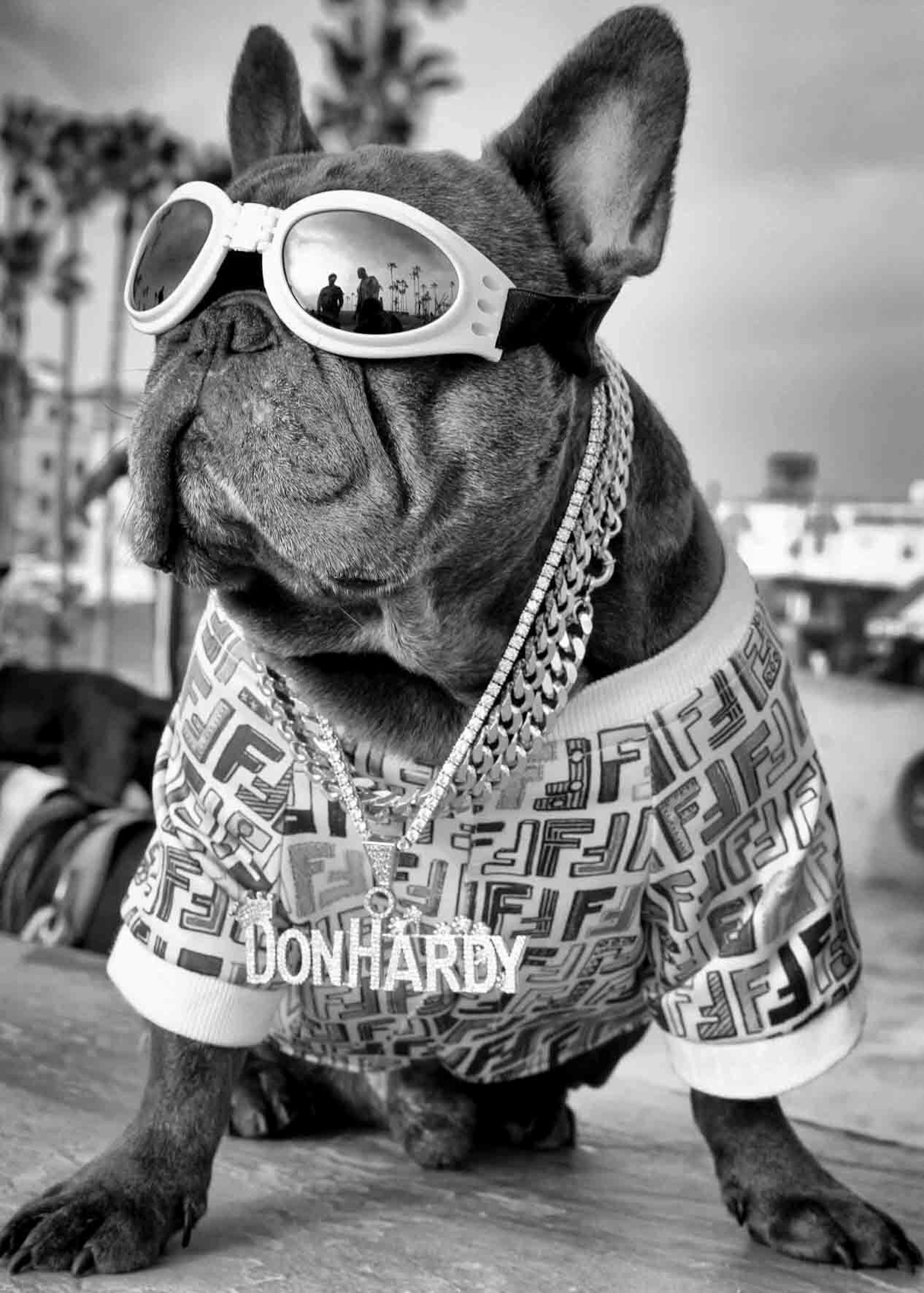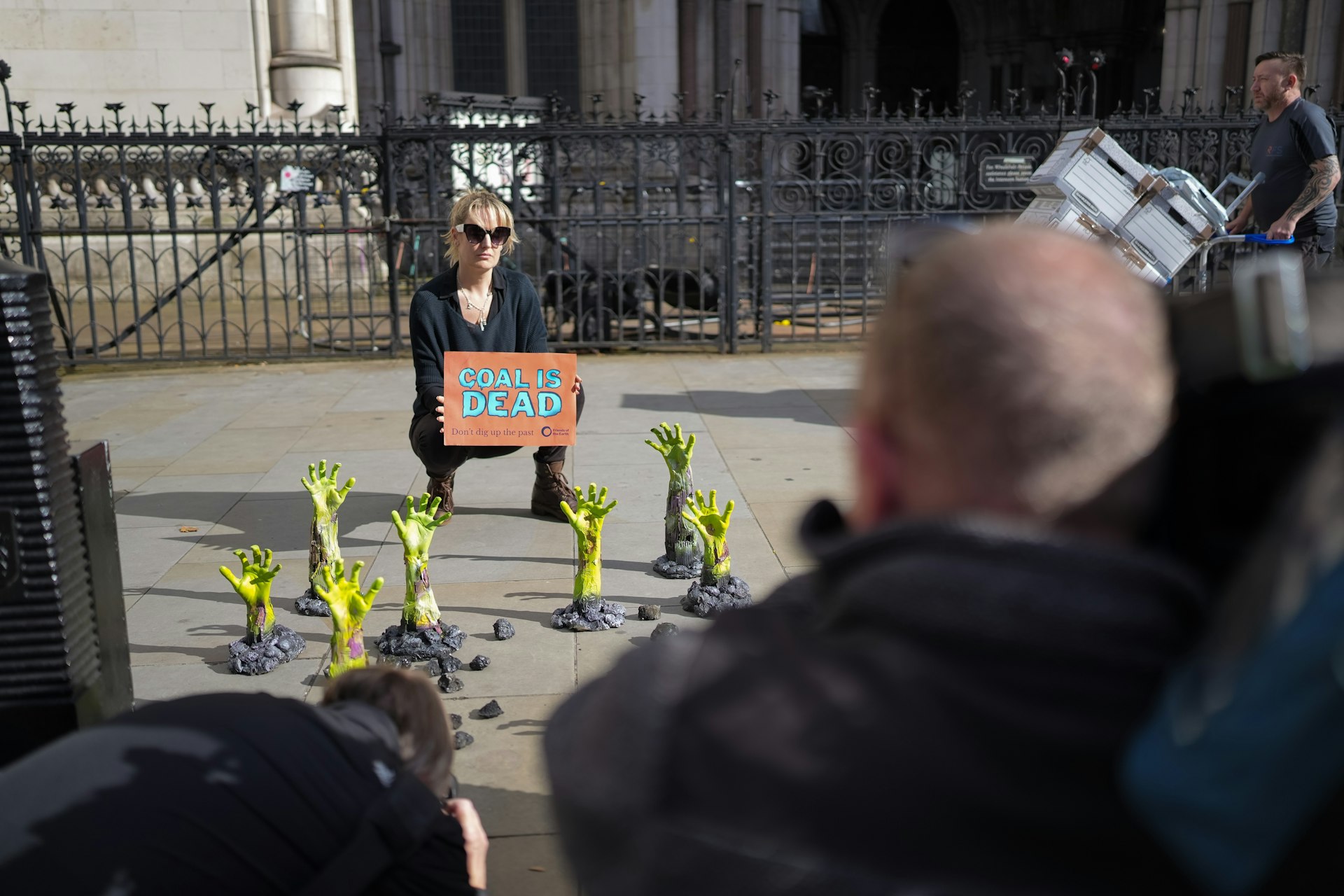The comic artist using isolation as inspiration
- Text by Michael Fordham
- Illustrations by Miranda Smart

“I like to say yes to things,” says comic artist and illustrator Miranda Smart. “I like to experience random things and random people.”
We’re chatting over a video call. Miranda is sitting in a bay window at the front of her house, which looks directly onto her street in Northampton, in England’s East Midlands. From this vantage point, she has spent the past four weeks studying the characters of her locked-down hometown, using them as references for her work. As she talks, light falls on her face from the window: a shadow passes, her eyes follow its shape.
“I spend hours in DIY stores stalking textures and shapes, even though they are such alien places for me,” she continues. “I go with a friend to pick up a wardrobe from someone on Gumtree and a whole new adventure opens up with random people in a strange town. I go to the 50th birthday of a complete stranger. This puts me into a weird juxtaposition with the world – it inspires me and alienates me at the same time.”
In the age of lockdown, there’s certainly less for Miranda to say ‘yes’ to – at least when it comes to outdoor adventures. But this only makes drawing creative inspiration from the present more fruitful, forcing her to take notice of the little things she’d otherwise miss. “I’m almost never bored. Right now, I can see this lovely guy who comes past the window everyday. He always wears his hoodie slung across his body and tied together with the arms. He’s got the best walk ever. That’s entertainment for me. That’s inspiration. There’s comfort in that for me.”
 When she was younger, attending a “fancy” school that didn’t suit her, Miranda didn’t read many comics. “There were’t many comic shops in Northampton,” she remembers. “And I didn’t have any money anyway!”
When she was younger, attending a “fancy” school that didn’t suit her, Miranda didn’t read many comics. “There were’t many comic shops in Northampton,” she remembers. “And I didn’t have any money anyway!”
But she always carried an urge to tell stories. It eventually led her to study Illustration and Visual Media at London College of Communication, where, exposed to the capital’s various art scenes, her relationship with comics began to take off. After graduating, she spent an extended creative sojourn in Porto, Northern Portugal, where her love of comic book abstraction was truly cemented.
Briz de Mar, the project that emerged from her stay there, was a riso-printed abstract comic zine, which she produced with a soundtrack that saw her collaborating with her partner at the time. The project came with a vinyl disc: each section of Miranda’s story was accompanied by another track on the vinyl. “It was all about the relationship I was in at the time. We took to comic fairs, and people seemed to understand, to feel the emotion themselves. I was able to see that finishing something – thinking a project through and realising it in three dimensions – was really satisfying.”
Today, it’s hard to categorise Miranda’s work. Perhaps ‘abstract’ doesn’t go far enough. Her lurid characters include green extraterrestrial creatures grappling with human emotions and ‘Phil The Pooping Stupid Squid’; the shapes she uses are glaring and textured, hinting at larger feelings of anxiety or fear.
 It should come as little surprise that she cites the likes of experimental artists Robert Crumb and Victor Moscozo as inspiration. “I didn’t know that you could be so weird and abstract and still be a comic artist. I didn’t know that you cover all this strange subject matter – that there were so many ways that you could use narrative.”
It should come as little surprise that she cites the likes of experimental artists Robert Crumb and Victor Moscozo as inspiration. “I didn’t know that you could be so weird and abstract and still be a comic artist. I didn’t know that you cover all this strange subject matter – that there were so many ways that you could use narrative.”
“I basically am telling stories, but really really simplified versions of them. There’s this thought of what horror is, for example. There’s this evil thing, that you’re scared of… I’m always thinking about what evil might look like and how you express that in an abstract way. How would I draw that in order for the story to be scary? I think that to get through the things that repulse you or scare you, you have to confront them.”
In conversation, Miranda laughs easily and observes keenly, always with a composed half-smile on her face. But beneath the layer of humour, there is a quietness to her that suits the delimited circumstances of lockdown. Isolation has, in a way, been stimulating, enabling her to seek out creativity in alternative circumstances. (The bay window, for instance, has become a constant source of inspiration.)


It’s fair to say that she has established herself in an unlikely space – a professional storyteller with strangeness and abstraction as the characters. Given that much of her work comes with a hint of dystopia, it feels particularly necessary for her to continue exploring these feelings during this time: her creativity is a strategy for dealing with the consequences of a life lived with little or no safety net. With that in mind, there’s never been a richer time for her to draw inspiration from real life.
“Maybe the coronavirus is the evil character of the moment. That orb-ish amoeba-like multi-suckered thing you see everywhere. I’d never get out of bed if I engaged with the news too much. It’s all just too mean and sad. All I can do is do what I do, which is drawing pictures, drawing textures, making shapes and working with their interactions. I suppose this whole process helps me understand what’s going on out there.”
But it’s not all introspection. The abstract comic book artist is, to say the least, a small and disparate community – as a result, the web has been vital in building a platform to show and share her work. Many of her working relationships were forged online, meaning that the transition into remote communication hasn’t felt too jarring, or lonely.
 “There aren’t many abstract comic book artists anyway – and they are never in the same place,” Miranda notes. “Whereas you used to have people like Robert Crumb who, even though they were super weird and abstract, were definitely of a time and of a place. Me, and people like me, on the other hand, belong to this abstract ‘Nation of the Internet.’ It’s where we communicate. It’s where we share who we are. It was important that I [can] get my stuff out there and stake my claim in this world, to be a presence.”
“There aren’t many abstract comic book artists anyway – and they are never in the same place,” Miranda notes. “Whereas you used to have people like Robert Crumb who, even though they were super weird and abstract, were definitely of a time and of a place. Me, and people like me, on the other hand, belong to this abstract ‘Nation of the Internet.’ It’s where we communicate. It’s where we share who we are. It was important that I [can] get my stuff out there and stake my claim in this world, to be a presence.”
In fact, this period of lockdown has been as collaborative as ever. With many freelance artists currently grappling with stress and uncertainty, the community has come together. While the feelings that have grown out of lockdown and self-isolation have resulted in rich areas for Miranda to explore, the conversations she’s been able to have with her contemporaries as a result have been just as useful.
“All of my favourite projects have been the result of really close collaboration”, she says. “It makes the whole process richer and more relevant. It also gives you an easier way to get your work out there, because with just one other person involved, you have a hundred percent more reach. Being able to show your work to more and more people through collaboration means that the impact is doubled, rather than halved.”
 Are you ready to share your vision with the world? Start building today: use the code HUCKMAG for a discount on a new Squarespace website.
Are you ready to share your vision with the world? Start building today: use the code HUCKMAG for a discount on a new Squarespace website.
Read more stories from our series on Creative Resilience, in partnership with Squarespace.
Enjoyed this article? Like Huck on Facebook or follow us on Twitter.
Latest on Huck

Autism cannot be cured — stop trying
A questionable study into the ‘reversal’ of autism does nothing but reinforce damaging stereotypes and harm, argues autistic author Jodie Hare.
Written by: Jodie Hare

Bristol Photo Festival returns for second edition
After the success of it’s inaugural run, the festival returns this autumn with exhibitions, education and community programmes exploring a world in constant motion through still image.
Written by: Ben Smoke

Documenting the life of a New York gang leader paralysed by gun violence
New photobook ‘Say Less’ is a complex yet humanising look into a life wrecked by gun violence and organised crime.
Written by: Isaac Muk

The woman who defined 80s Hip Hop photography
A new exhibition brings together Janette Beckman’s visionary and boundary pushing images of an era of cultural change and moral panic.
Written by: Miss Rosen

In photos: the dogs of Dogtown
A new photobook documents Venice Beach’s four legged friends and their colourful cast of owners.
Written by: Isaac Muk

Inside the battle to stop coal
As the legal challenge against Britain’s first deep coal mine in 30 years reaches the High court, we talk to activists at the centre of the fight to stop it.
Written by: Ben Smoke